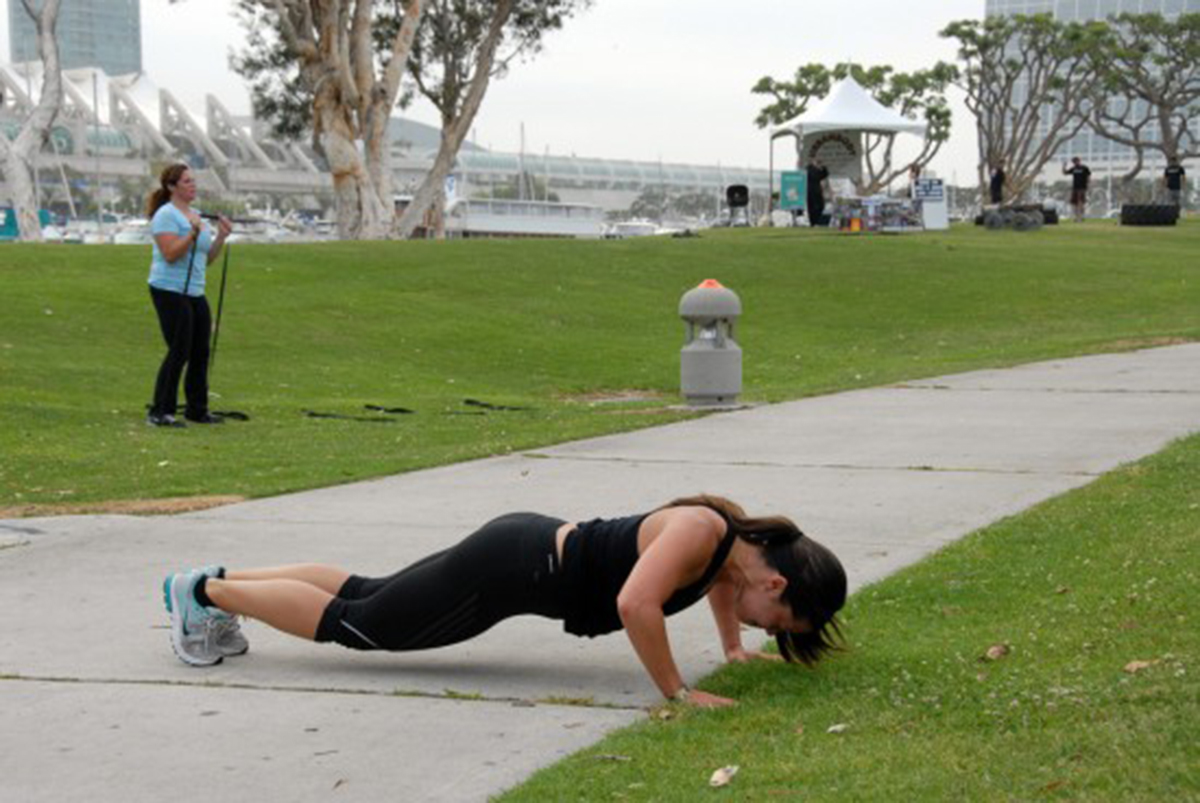Table of Contents
The perfect warm up combines something that raises your pulse, activities that improve your mobility, reduces your injury risk, improves performance and is specific to the activity you’re doing.
It has four components.

1. Dynamic Mobility
Dynamic mobility work combines stretching and cardio in such a way that you get warm, loosen up your muscles and avoid injury, but avoid the pitfalls of regular cardio and static stretching.
Read More: 8 Myths about Stretching
The best way to warm up dynamically is to pick a few basic moves that target your whole body through a thorough range of motion. You can choose any moves that you like, but a great combo is:
- Body weight squats, lifting your arms high overhead as you squat down
- Lunges, twisting to the side on every rep and alternating legs
- Pushups, holding the bottom stretched position for three seconds
- A pull-down or row using a resistance band
- Cross body mountain climbers. (In a pushup position bring your right knee toward your left elbow and back, then left knee toward your right elbow)
- Rolls to toe touches (Sit on the floor with your legs straight out in front and spread apart. Roll backward onto your upper back, then roll forward, reaching as close to your toes as you can.)
Perform 10 reps on everything with no rest in between. This will take a maximum of 90 seconds.
2. Static Stretching
But I said earlier NOT to static stretch, didn’t I?
I certainly did, but there are some instances where it’s okay. Namely if you have a muscle group that is particularly tight and may inhibit your performing certain exercises. Using our office worker as an example again, most of these guys have chronically tight hip flexors, pecs and adductors, which can limit their ability to squat, deadlift and bench press safely.
If you know you have a very tight muscle group or two, stretch them for 20 seconds each side before you begin your session. It will make all the difference.
3. Activation
Activation drills get your fast twitch muscle fibers going.
If you’re doing a lower-body session, perform five sets of three explosive squat jumps, broad jumps or box jumps. If it’s an upper body workout, five sets of three clap pushups will do the trick.
4. Specific Drills
Specific drills simply mean starting lighter on every exercise. So if your workout calls for you to perform five sets of eight squats with 175 pounds, your warm up would finish with your performing eight squats with 45 pounds, eight reps with 95 pounds, eight reps with 135 pounds, before starting your workout at the prescribed weight.
Give it a try, and track how your overall performance improves over time! You might be surprised — but only if you really put effort into your warm up!
- "Maximum Strength" Eric Cressey, p.20-24, 2008
- Photo courtesy of USAG- Humphreys by Flickr : www.flickr.com/photos/usaghumphreys/6206828712/
- Photo courtesy of Port of San Diego by Flickr : www.flickr.com/photos/portofsandiego/7244626060


Your thoughts on this